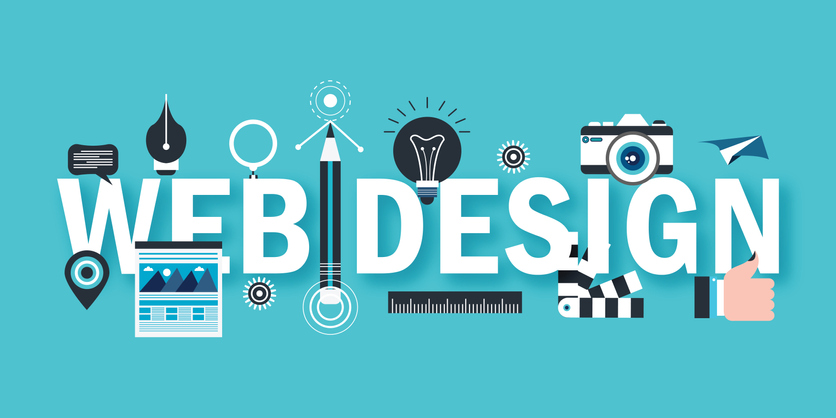Comprehending Customer Experience: Secret Concepts for Successful Internet Design
In the world of website design, understanding individual experience (UX) is paramount to producing systems that not only bring in but likewise preserve individuals. Trick principles such as user-friendly navigating and effective comments devices play vital duties in promoting customer fulfillment. Additionally, considerations for accessibility guarantee that all customers can involve with the content effortlessly. The subtleties of visual layout and the relevance of iterative testing commonly continue to be overlooked. As we explore these foundational aspects, it ends up being apparent that understanding UX is not just an alternative yet a necessity for success. What are the implications of overlooking these principles?
Importance of Customer Experience

In the world of internet style, one can not ignore the significance of individual experience (UX) as a critical element that straight affects the success of a site. A positive UX not just improves user complete satisfaction however also cultivates loyalty, encouraging repeat visits and communications. When individuals come across a interesting and user-friendly interface, they are most likely to explore the material, exchange customers, or share their experiences with others. This natural promotion can dramatically magnify a brand's reach and presence.
Furthermore, the relevance of UX prolongs beyond plain looks. It encompasses the general capability of a website, making sure that navigating is smooth and information is quickly obtainable. Websites that prioritize UX are usually perceived as more trustworthy and trustworthy, which can have an extensive impact on conversion rates. In contrast, bad UX can cause aggravation, leading to high bounce prices and shed possibilities.
Eventually, investing in user experience is not just a design choice; it is a strategic decision that can differentiate a brand name in a jampacked industry. By concentrating on UX, companies can produce meaningful interactions that reverberate with customers, leading the way for sustained success in the digital landscape.
Usability Concepts
Efficient website design hinges on the application of vital use concepts that guarantee a site is both functional and straightforward. Central to these principles is the principle of intuition, where individuals can navigate the website effortlessly without comprehensive guideline. Clear navigating structures, consisting of regular designs and well-labeled menus, boost this user-friendly experience, permitting individuals to locate details quickly.
Consistency is equally essential; preserving uniformity in design components, terminology, and procedures throughout the site helps to decrease confusion. Users need to not need to relearn how to connect with various sections of the internet site.
Furthermore, error avoidance and healing are essential for use. Sites should be created to reduce the opportunity of individual mistakes, and when errors occur, clear and positive mistake messages ought to guide individuals in the direction of resolution.
Availability Considerations
Making sure ease of access in internet design is critical for producing comprehensive electronic experiences that weblink deal with all customers, including those with specials needs. Accessibility factors to consider involve developing internet sites that accommodate varied demands, enabling customers with aesthetic, auditory, cognitive, or electric motor problems to navigate and communicate properly.
To achieve this, web developers need to comply with established standards, such as the Internet Content Ease Of Access Standards (WCAG) These standards provide a framework for making content perceivable, operable, easy to understand, and durable. Key practices include making sure enough shade contrast, offering text options for non-text web content, and making certain key-board navigability.
Additionally, semantic HTML ought to be used to improve display visitor compatibility, permitting customers with aesthetic problems to understand the framework and meaning of content intuitively. web design. Providing clear, concise instructions and using straightforward language can even more improve functionality for individuals with cognitive impairments
Routine ease of access testing, involving real users with disabilities, is necessary to Discover More determine barriers and improve the individual experience. By prioritizing availability, web designers not only adhere to lawful criteria however likewise foster a more fair electronic landscape, eventually benefiting everyone via improved functionality and engagement.
Aesthetic Layout Aspects
A myriad of aesthetic style elements plays an essential duty in shaping user assumptions and experiences on a site. These components include color design, typography, imagery, whitespace, and design, each adding to the overall aesthetic appeal and efficiency of a website.

Color schemes stimulate emotions and can influence customer actions; for instance, cozy colors might produce a sense of necessity, while amazing colors often advertise calmness. Typography, on the various other hand, impacts readability and can develop a brand's personality - web design. The option of font style and dimension should straighten with the web site's objectives and target market
Imagery, consisting of icons and images, enhances storytelling and can significantly impact user involvement. Top quality visuals create a sense of professionalism, while poor-quality pictures may diminish the customer experience.
Format and whitespace are equally crucial, as they lead users via the material. A well-structured format helps users locate information swiftly, while sufficient whitespace protects against clutter, assisting in a more satisfying surfing experience.

Checking and Iteration
Customer testing and model are essential parts of a successful internet style procedure. These methods make it possible for designers to collect important responses from actual customers, guaranteeing that find the end product satisfies their assumptions and needs. Individual screening includes observing just how real individuals interact with a site, recognizing usability problems, and understanding individual actions. This straight responses is important in disclosing pain points that may not be noticeable during the style stage.
Version, on the various other hand, is the procedure of fine-tuning the layout based upon the understandings gained from user testing. By making incremental modifications and re-evaluating the style, teams can improve performance, enhance appearances, and optimize user engagement. This cyclical approach fosters a culture of continuous improvement, allowing designers to adjust to customer demands and arising fads successfully.
In addition, incorporating both individual testing and version into the design procedure brings about even more educated decision-making and eventually leads to a more user-centered product. By welcoming these concepts, web designers can create more instinctive, appealing, and effective experiences that resonate with their target market, inevitably driving greater user complete satisfaction and retention.
Conclusion
In conclusion, individual experience is a critical element of reliable web style, incorporating usability, availability, and visual considerations. Constant screening and model serve as crucial procedures for resolving and identifying individual discomfort factors, ensuring that web styles stay versatile to evolving needs.
In the realm of web style, recognizing customer experience (UX) is paramount to creating platforms that not only draw in yet additionally preserve users.In the realm of web design, one can not ignore the relevance of individual experience (UX) as a crucial component that straight affects the success of an internet site. Customer screening entails observing just how actual customers connect with a website, recognizing use concerns, and recognizing customer actions.In verdict, individual experience is an important part of efficient web design, encompassing usability, accessibility, and visual factors to consider. Constant testing and iteration serve as essential procedures for dealing with and identifying customer discomfort points, guaranteeing that internet layouts stay adaptable to evolving demands.